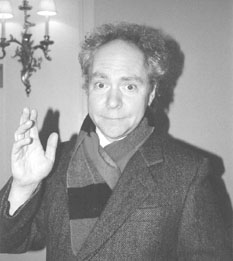For those amongst you which dabble in the arts of prestidigitation these Secrets are important, but the core principals are worth taking note of for any Showman. The advice comes from Teller, probably most famous for being the silent part of the dynamic magic duo Penn and Teller.
Teller "Teller (born Raymond Joseph Teller; February 14, 1948) is an American magician, illusionist, comedian, writer, and the frequently silent half of the comedy magic duo Penn & Teller, along with Penn Jillette. Teller is an atheist, debunker, skeptic, and a fellow of the Cato Institute (a free market libertarian think tank which also lists his partner Penn Jillette as a fellow). The Cato Institute Association is featured prominently in the Penn and Teller Showtime TV series Bullshit!. He legally changed his name to just "Teller"."
Wikipedia
Teller shared his Secrets of Magic in a fine article from the Smithsonian Magazine. You can read the full article here.
1. Exploit pattern recognition. I magically produce four silver dollars, one at a time, with the back of my hand toward you. Then I allow you to see the palm of my hand empty before a fifth coin appears. As Homo sapiens, you grasp the pattern, and take away the impression that I produced all five coins from a hand whose palm was empty.
2. Make the secret a lot more trouble than the trick seems worth. You will be fooled by a trick if it involves more time, money and practice than you (or any other sane onlooker) would be willing to invest. My partner, Penn, and I once produced 500 live cockroaches from a top hat on the desk of talk-show host David Letterman. To prepare this took weeks. We hired an entomologist who provided slow-moving, camera-friendly cockroaches (the kind from under your stove don’t hang around for close-ups) and taught us to pick the bugs up without screaming like preadolescent girls. Then we built a secret compartment out of foam-core (one of the few materials cockroaches can’t cling to) and worked out a devious routine for sneaking the compartment into the hat. More trouble than the trick was worth? To you, probably. But not to magicians.
3. It’s hard to think critically if you’re laughing. We often follow a secret move immediately with a joke. A viewer has only so much attention to give, and if he’s laughing, his mind is too busy with the joke to backtrack rationally.
4. Keep the trickery outside the frame. I take off my jacket and toss it aside. Then I reach into your pocket and pull out a tarantula. Getting rid of the jacket was just for my comfort, right? Not exactly. As I doffed the jacket, I copped the spider.
5. To fool the mind, combine at least two tricks. Every night in Las Vegas, I make a children’s ball come to life like a trained dog. My method—the thing that fools your eye—is to puppeteer the ball with a thread too fine to be seen from the audience. But during the routine, the ball jumps through a wooden hoop several times, and that seems to rule out the possibility of a thread. The hoop is what magicians call misdirection, a second trick that “proves” the first. The hoop is genuine, but the deceptive choreography I use took 18 months to develop (see No. 2—More trouble than it’s worth).
6. Nothing fools you better than the lie you tell yourself. David P. Abbott was an Omaha magician who invented the basis of my ball trick back in 1907. He used to make a golden ball float around his parlor. After the show, Abbott would absent-mindedly leave the ball on a bookshelf while he went to the kitchen for refreshments. Guests would sneak over, heft the ball and find it was much heavier than a thread could support. So they were mystified. But the ball the audience had seen floating weighed only five ounces. The one on the bookshelf was a heavy duplicate, left out to entice the curious. When a magician lets you notice something on your own, his lie becomes impenetrable.
7. If you are given a choice, you believe you have acted freely. This is one of the darkest of all psychological secrets. I’ll explain it by incorporating it (and the other six secrets you’ve just learned) into a card trick worthy of the most annoying uncle.


No comments:
Post a Comment